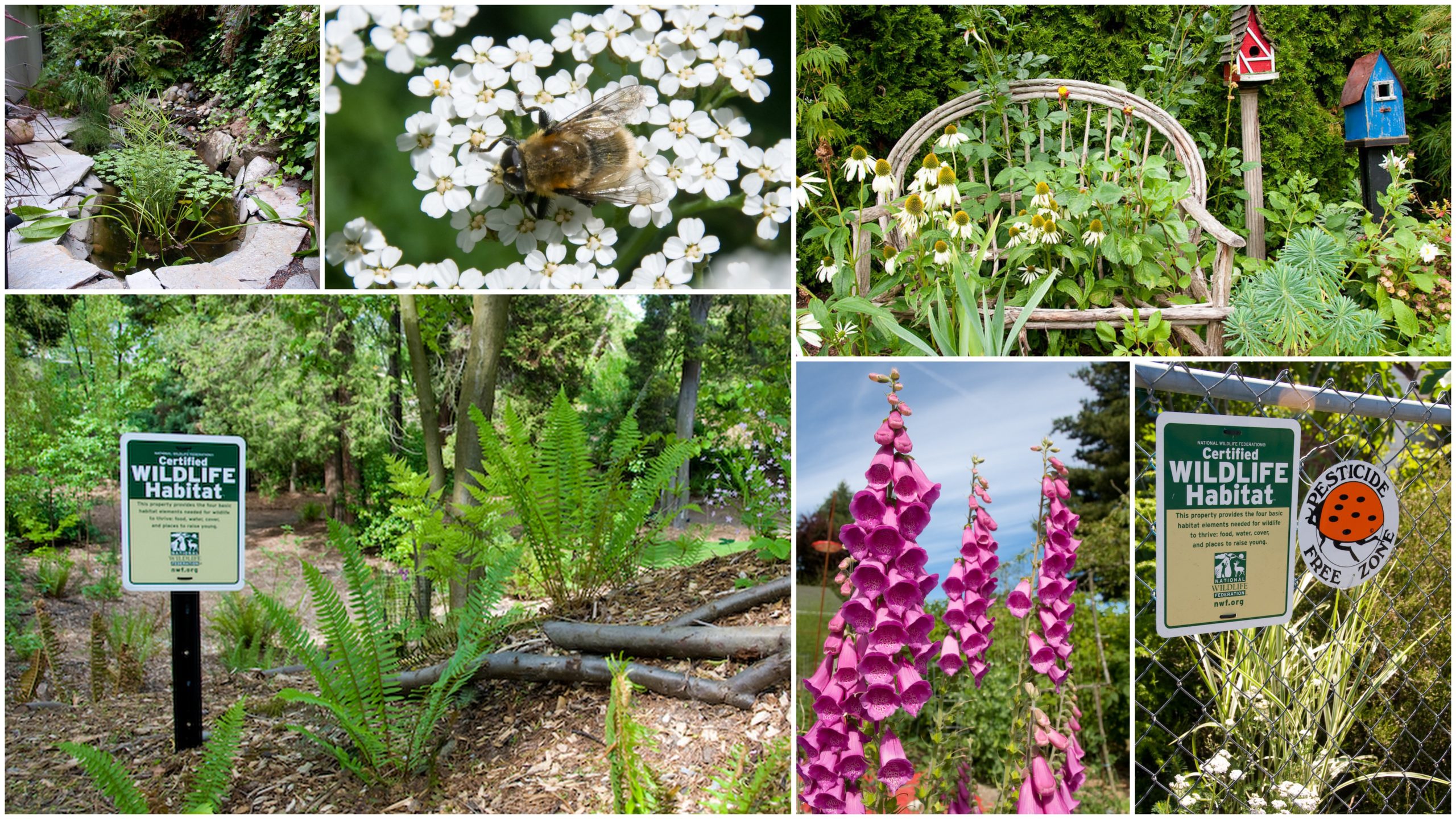This was originally published on Native Plants & Wildlife Gardens.
Recently, I attended my third community wildlife habitat tour here in the Puget Sound region. This area is lucky to have a great number of National Wildlife Federation Certified Community Wildlife Habitats including some of the oldest. There are 30 active communities in the Puget Sound, 12 are certified, some registered while others are active and working towards getting their communities certified. The newest certified community, Sammamish achieved theirs in less than 2 years.
In addition to NWF certification, Washington homeowners have a triple certification option with two other partners. The Washington Department of Fish and Wildlife has a Backyard Wildlife Sanctuaryprogram and the NW Zoo & Aquarium Alliance also has a program, all of which can be certified with one joint application (PDF).
Several of the local certified community habitats conduct annual tours of select yards. Last September I attended the Edmonds tour as part of the Puget Sound Bird Fest, earlier this year I visited the Tukwila tour as part of the Backyard Wildlife Festival and most recently I went on theShoreline tour called Where Our Wild Things Are.
At each tour, I was amazed and inspired by the creativity of each homeowner. Given the basic requirements of food, water, shelter and a place to raise young, each person took those and really made it work for themselves. The first tour I attended in Edmonds, the lesson I took away was how well the homeowners were able to merge their horticultural and personal interests with habitat. One gardener loved collecting Japanese maples and had integrated them into her beautiful garden. Another had a passion for dahlias and she integrated habitat into her collection by adding stakes higher than the flowers to give perches for dragonflies, which they used. In each of the other tours, the idea of making the habitat individual, was not lost. They each made their yard or garden their own and found a balance between their needs, aesthetics and the needs of wildlife. I’ve seen many themes and interests in gardens including chickens, urban farming, accessibility, plant collections, play space, a salmon creek and art.
I can’t think of a better experience for anyone interested in backyard wildlife habitat than attending a tour. Visiting backyards of other gardeners takes a visitor into a personal space to catch a glimpse of what is important to the homeowner. It also is very valuable because you can see what challenges others have faced and how they’ve creatively solved problems. For example I’ve seen yards which back against a major highway and lightrail line, yards which have had to deal with troublesome and unwanted plants, yards which lie along a river, gardens which are grown on a steep slope and many other challenges. I’ve heard owners discuss how they got plants from neighbors, construction salvations and local conservation districts. At every yard the homeowners greeted visitors and were extremely happy to discuss their planning, challenges and successes.
If you’re not lucky enough to live where any tours take place why not start one yourself? Reach out to the NWF, your local extension service or department of fish and wildlife and see if they know of other backyard wildlife gardeners. Connect on the Facebook pages Native Plants and Wildlife Gardens, Beautiful Wildlife Garden or the NWF page Certified Wildlife Habitat. Be a steward and get your community certified, they all started with individual backyard gardeners coming together to help their community make an impact.
Read about my visits to each three community habitats:
Shoreline Wildlife Habitat Tour | Photo Album






